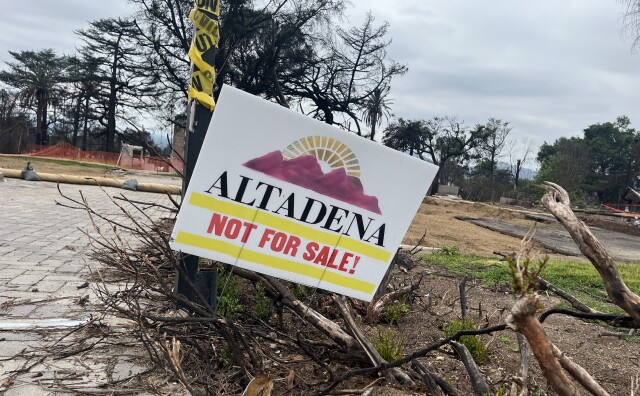With our free press under threat and federal funding for public media gone, your support matters more than ever. Help keep the LAist newsroom strong, become a monthly member or increase your support today.
This archival content was written, edited, and published prior to LAist's acquisition by its current owner, Southern California Public Radio ("SCPR"). Content, such as language choice and subject matter, in archival articles therefore may not align with SCPR's current editorial standards. To learn more about those standards and why we make this distinction, please click here.
Do Hold Your Breath: L.A. Is America's 6th Most Toxic City

By Kevin Mathews/Special to LAistNow is not the time for Anglenos to breathe a sigh of relief. In fact, after Forbes released a report yesterday naming Los Angeles the sixth most toxic city in America, they might want to hold their breath altogether. While it is no secret that Los Angeles faces a pollution problem, many residents may not realize just how many toxic elements they are exposed to on a daily basis.
Los Angeles ranked better than Philadelphia (#1) and New York City (#4), but only slightly. To determine the placements of the largest American cities, Forbes used several factors including water quality, air quality, the amount of toxins currently being released into the air, and the Air Quality Index (AQI), a score furnished by the US Environmental Protection Agency.
The AQI scores of Los Angeles were especially detrimental. A score of more than 100 hurts those who are most susceptible to respiratory hazards such as kids, seniors, and people with lung disorders. When the score goes significantly above 100, everyone is considered to be at risk. While the majority of cities never exceed an AQI score of 100, Los Angeles recorded fourteen days of this dangerous air in 2009.
The water quality is another cause for concern. Arsenic, nitrate, and methane are among the toxic elements and compounds found in the Los Angeles water supply.
Those people looking to escape to a place deemed less poisonous might have to leave the state entirely. Los Angeles was just one of four California cities that placed in the list’s top ten, with Bakersfield, Fresno, and Riverside-San Bernardino placing second, third, and tenth respectively. The primary reason for California’s shoddy showing is the state’s widespread smog.
At LAist, we believe in journalism without censorship and the right of a free press to speak truth to those in power. Our hard-hitting watchdog reporting on local government, climate, and the ongoing housing and homelessness crisis is trustworthy, independent and freely accessible to everyone thanks to the support of readers like you.
But the game has changed: Congress voted to eliminate funding for public media across the country. Here at LAist that means a loss of $1.7 million in our budget every year. We want to assure you that despite growing threats to free press and free speech, LAist will remain a voice you know and trust. Speaking frankly, the amount of reader support we receive will help determine how strong of a newsroom we are going forward to cover the important news in our community.
We’re asking you to stand up for independent reporting that will not be silenced. With more individuals like you supporting this public service, we can continue to provide essential coverage for Southern Californians that you can’t find anywhere else. Become a monthly member today to help sustain this mission.
Thank you for your generous support and belief in the value of independent news.

-
The Palisades Fire erupted on Jan. 7 and went on to kill 12 people and destroy more than 6,800 homes and buildings.
-
People moving to Los Angeles are regularly baffled by the region’s refrigerator-less apartments. They’ll soon be a thing of the past.
-
Experts say students shouldn't readily forgo federal aid. But a California-only program may be a good alternative in some cases.
-
Distrito Catorce’s Guillermo Piñon says the team no longer reflects his community. A new mural will honor local leaders instead.
-
The program is for customers in communities that may not be able to afford turf removal or water-saving upgrades.
-
More than half of sales through September have been to corporate developers. Grassroots community efforts continue to work to combat the trend.







